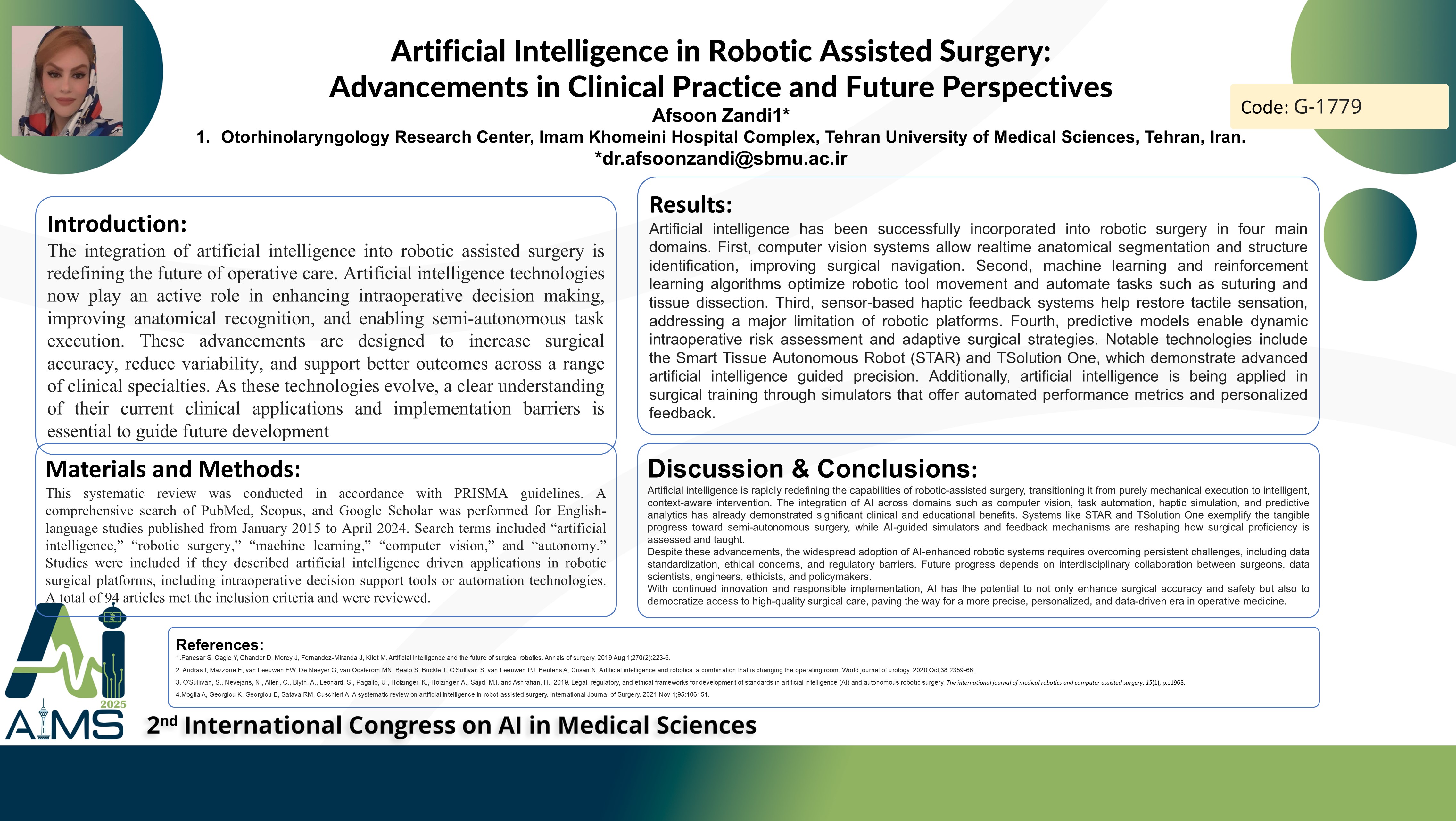هوش مصنوعی در جراحی رباتیک : پیشرفت های بالینی و چشم اندازهای آینده
کد: G-1779
نویسندگان: Afsoon Zandi * ℗
زمان بندی: زمان بندی نشده!
برچسب: رباتیک در جراحی و مراقبت سلامت
دانلود: دانلود پوستر
خلاصه مقاله:
خلاصه مقاله
Background and Aims: The integration of artificial intelligence into robotic assisted surgery is redefining the future of operative care. Artificial intelligence technologies now play an active role in enhancing intraoperative decision making, improving anatomical recognition, and enabling semi-autonomous task execution. These advancements are designed to increase surgical accuracy, reduce variability, and support better outcomes across a range of clinical specialties. As these technologies evolve, a clear understanding of their current clinical applications and implementation barriers is essential to guide future development. Methods: This systematic review was conducted in accordance with PRISMA guidelines. A comprehensive search of PubMed, Scopus, and Google Scholar was performed for English-language studies published from January 2015 to April 2024. Search terms included “artificial intelligence,” “robotic surgery,” “machine learning,” “computer vision,” and “autonomy.” Studies were included if they described artificial intelligence driven applications in robotic surgical platforms, including intraoperative decision support tools or automation technologies. A total of 94 articles met the inclusion criteria and were reviewed. Results: Artificial intelligence has been successfully incorporated into robotic surgery in four main domains. First, computer vision systems allow realtime anatomical segmentation and structure identification, improving surgical navigation. Second, machine learning and reinforcement learning algorithms optimize robotic tool movement and automate tasks such as suturing and tissue dissection. Third, sensor-based haptic feedback systems help restore tactile sensation, addressing a major limitation of robotic platforms. Fourth, predictive models enable dynamic intraoperative risk assessment and adaptive surgical strategies. Notable technologies include the Smart Tissue Autonomous Robot (STAR) and TSolution One, which demonstrate advanced artificial intelligence guided precision. Additionally, artificial intelligence is being applied in surgical training through simulators that offer automated performance metrics and personalized feedback. Conclusion: Artificial intelligence enhanced robotic surgery holds transformative potential for improving precision, efficiency, and outcomes. Widespread adoption will require validation through clinical trials, regulatory alignment, and collaboration between surgeons, engineers, and health systems.
کلمات کلیدی
Artificial Intelligence, Medicine, Robotic Surgery
